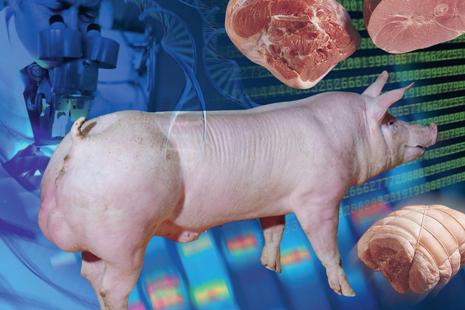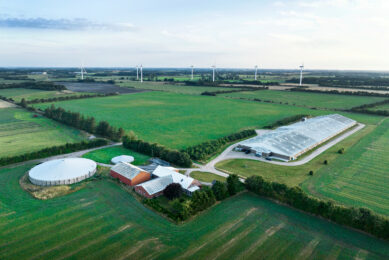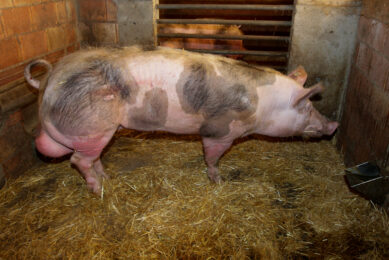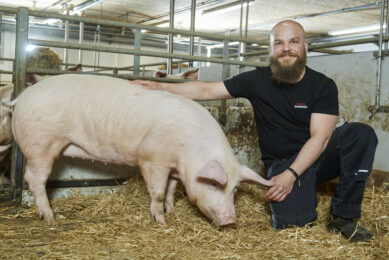Breeding objectives of the future

Recent years have seen a gradual shift in genetic research emphasis for pigs. Apart from production type traits being important, functional traits are receiving increasing amounts of attention. Which genetic components will constitute the pig of the near future?
By Dr Grant Walling, R&D genetics director, JSR Genetics
Predicting the future of any industry is extremely difficult and pig production is no different. The association of the industry with other volatile sectors such as global cereal prices and international currency exchanges makes prophecy almost impossible. However one sector, that has to make some clear predictions, includes the breeding companies. Due to the genetic delay between the objectives set in the breeding company nucleus and the resultant products reaching the producer, today’s breeding goals will be tomorrow’s products (the actual delay is typically three to five years depending on the structure of the breeding programme).
©
In order to look even further into the future it is worthwhile reviewing the current research activities of the breeding companies as these activities could represent new products in a ten year timeframe. By doing this, one of the very noticeable changes in the research is the switch in emphasis from production type traits such as piglets born per sow, to longevity and functional traits such as bone strength and structure.
©
©
Why has this change occurred? One of the main reasons has been some of the negative consequences of increasing more traditional production traits. Significant increases in numbers born alive in Danish herds have been accompanied by an increase in sow mortality reaching 15% in the 2008 annual report from Danish Pig Production. Global data has demonstrated an increase in sow mortality is typically related to leg problems or higher levels of reproductive failure. Other data outside Denmark have demonstrated leaner animals experiencing greater leg problems and higher performing animals having a less active immune system.
©
Conflict
So why does this conflict occur? It really comes down to how the animal allocates the resources it receives through nutrition. Often increased performance is due to an animal allocating the available resource into the trait under selection, such as more piglets born alive or lean tissue growth rate rather than using the resource for its own skeletal structure or mechanisms for fighting disease. Examples of this are available in other species, one of the most familiar being oesteochondrosis in poultry, sheep and human populations where calcium and phosphorus is diverted to egg production rather than bone structure. It is therefore not surprising that many of the genes that are currently being studied by research groups are associated with calcium regulation and use inside the pig’s body.
©
Are producers going to have to accept low levels of performance if they want more robust animals? The answer to this question is not easy; some of the candidate genes under investigation are clearly associated with conventional performance traits such as Apolipoprotein E (APOE) responsible for the movement of fat around the body and Gonadotrophin-releasing hormone receptor (GNRHR) responsible for the activation of the main hormones responsible for the reproductive cycle. Selection of alternative allele variants of these genes may increase fatness or decrease reproductive function respectively. In contrast, there are a number of genes included without any obvious negative consequences on production traits such as Indian Hedgehog Homologue involved in cartilage development. Identification of a role for this gene in reducing leg problems in sows may allow an improvement in sow survival without compromising performance.
©
New areas of research
One entirely new area of research involves the affect of the sow or growing pig on the environment. We are all aware that world leaders have made significant pledges to reduce emissions e.g. European Union Energy Policy (a unilateral 20% reduction in green house gas emissions by 2020). However, the answers to how this can be achieved in the livestock sector, are not simple and governments cannot simply export the problem overseas as this just adds food miles and fails to recognise a global problem. Scientists cannot become too entrenched in their individual disciplines, as the solution needs to benefit the entire system. Reducing nitrogen excretion is not a benefit if arable operators need to purchase greater amounts of nitrogen fertiliser (itself requiring a high energy production process) to compensate.
©
Some initial work from the University of Edinburgh suggests that not only can genetics improve the carbon footprint of pig production but has been doing so for at least the last 20 years. The key is the improvement of efficiency. Breeding companies for the last 25 years have selected animals based on higher output (pigs/sow/year) and higher levels of efficiency (high growth rate and lean meat % and low FCR). This means that the level of output (kilos of pigmeat) per unit input (kilos of feed) has significantly improved over time.
©
Based on pig breeding company rates of genetic improvement, Eric Audsley, Huw Jones and Adrian Williams have estimated the effect of genetic improvement on enteric and nitrogenous emissions using LCA modelling.©
©
The results from 1988 to date showed a 1.5% per annum reduction in methane emissions, a 1.7% per annum reduction in nitrogen excretion, a 1.2% per annum reduction in CO2 emissions and a 1.3% reduction in MJ of energy used per unit output. More importantly, the paper also predicted a 1% per annum improvement in all these traits for the next 15 years. Such reductions meant that pig producers using modern genetics had already achieved Kyoto greenhouse gas emissions targets by the time the treaty was signed in 1997 (the treaty agreed a 5.2% reduction based on 1990 emission levels).
©
Farming system
Further the farming system also has a significant affect on the carbon footprint of pork and it is likely that these will be scrutinised in more detail in the future. Lower output systems, such as those achieved through high welfare and organic sectors do not fare well. They need significant resources but deliver only moderate returns, the challenge for the researchers is developing modern farming systems that achieve high levels of efficiency and output in order to minimise environmental consequences.
©
So what does this change in research focus mean for a pig producer? Given the time required to complete and implement research findings it is likely to be at least five years before any changes reach producers. At this point the emphasis will likely have changed onto the productive lifetime performance of the sow rather than pigs per sow per annum. A sow doesn’t recover her investment cost until parity 3, so a high producing herd achieving 30 pigs weaned per annum may not be profitable if the majority of animals struggle to survive passed their second parity. Similarly, animals requiring high levels of inputs, in a world with ever-depleting resources, may quickly become less economically competitive regardless of its performance. That, coupled with possible taxation on sectors of industry with the highest levels of pollution, will mean it is only the most efficient animals and farming systems with lower inputs that are likely to thrive in the modern farming systems of the future.
©
Source: Pig Progress Volume 25 nr©9











